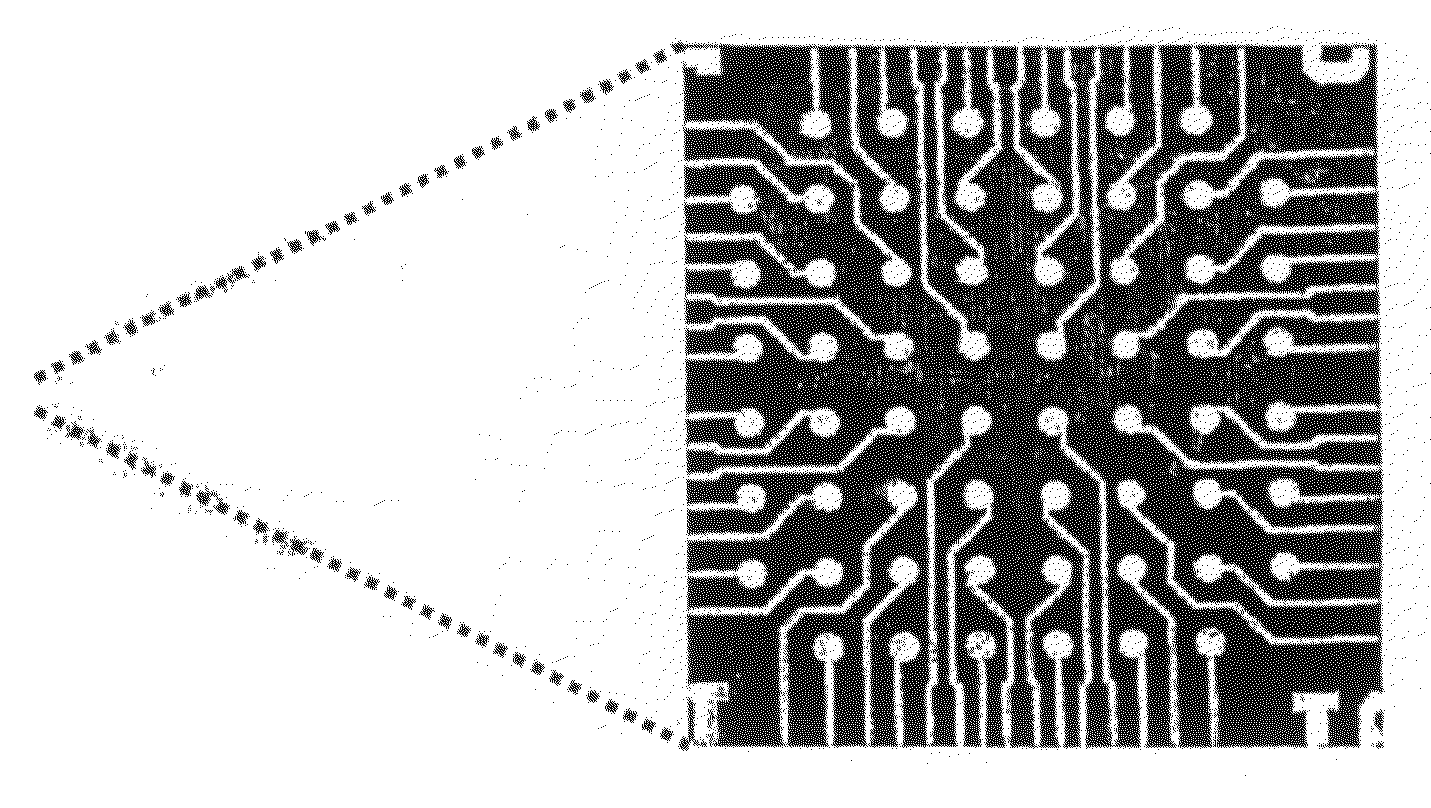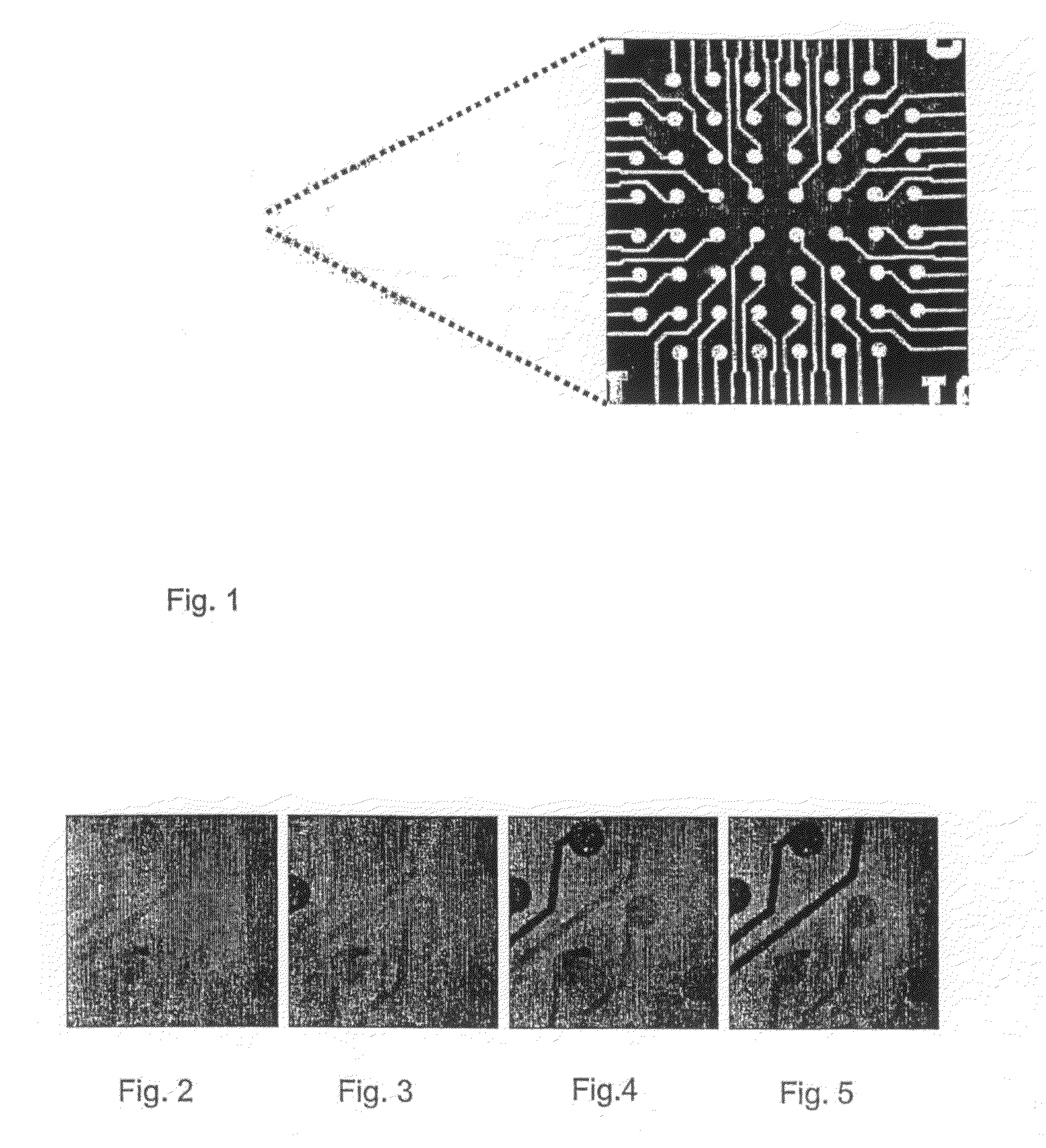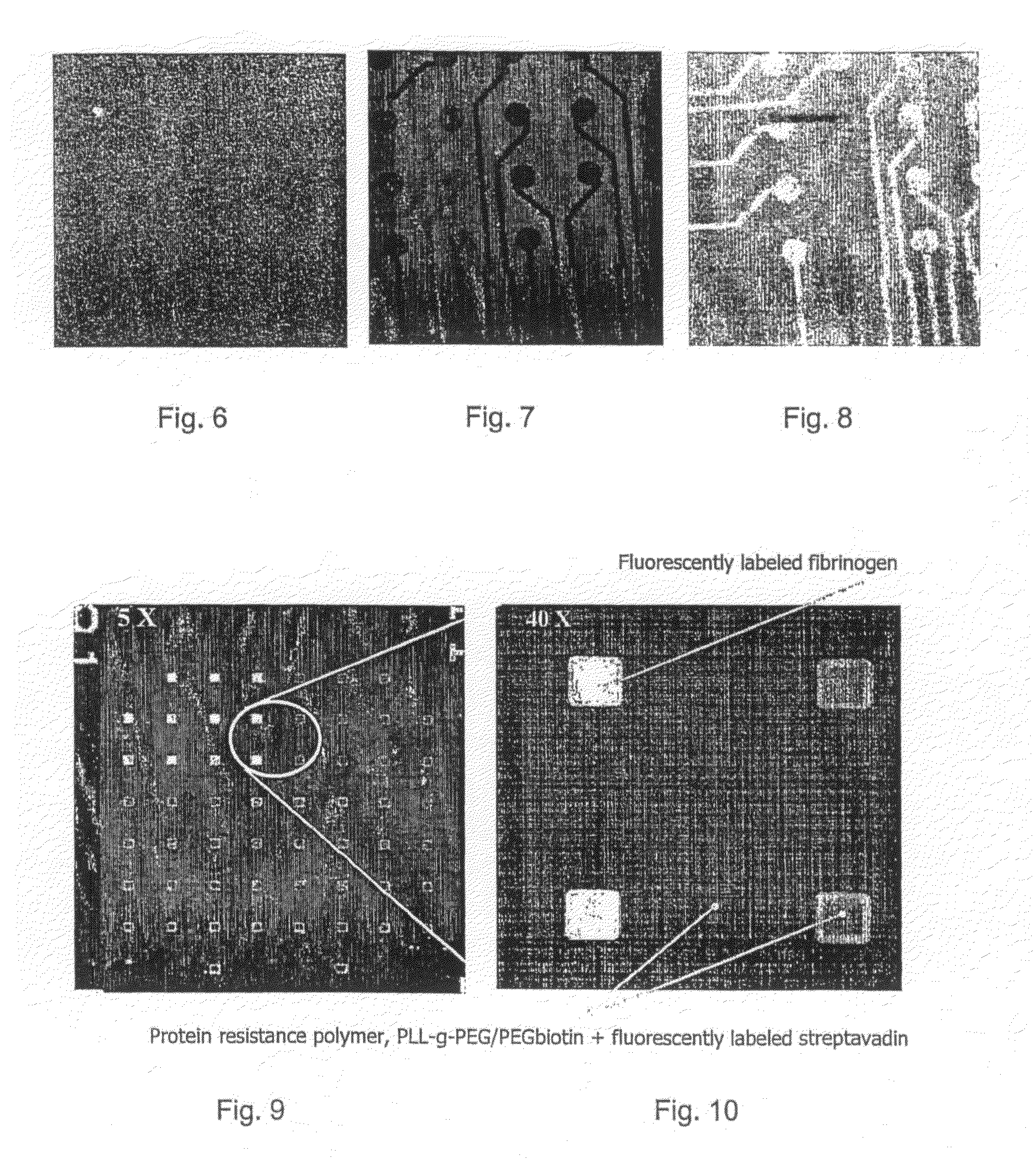Electrochemical Patterning on Multi-Channel Microelectrode Array for Biosensing Applications
a microelectrode array and multi-channel technology, applied in the field of new electrode array technology, can solve the problems of large complexity, lack of suitable methods and means, time-consuming, expensive, etc., and achieve the effect of high selectivity
- Summary
- Abstract
- Description
- Claims
- Application Information
AI Technical Summary
Benefits of technology
Problems solved by technology
Method used
Image
Examples
example 1
Passivation and Electronic Activation of Microelectrode Array
[0080]PLL-g-PEG / 633 solution was adsorbed in the flow cell onto the microelectrode array platform at an open circuit potential for 60 min. FIG. 2 is a confocal image showing the uniform adsorption of the fluorescence-labeled PLL-g-PEG / 633 onto the surface of the microelectrode array at open circuit potential. The microelectrodes are slightly darker in comparison to the surrounding silicon oxide region, primarily due to the quenching effects of the ITO. A photo-bleached region on an unaddressed PLL-g-PEG / 633 coated microelectrode revealed the background signal of the underlying platform.
[0081]By applying an external electric field of +1800 mV (reference to a silver electrode) on the individually selected ITO microelectrode(s), the loss of fluorescence signal on it(them) could be shown to be within less than 60 seconds (FIGS. 2 to 5). The loss of the fluorescence signal is due to the electrochemical desorption of the protein...
example 2
Selective Surface Functionalization with Fluorescence-Labeled Polymer, poly(L-lysine)-grafted-poly(ethylene glycol) (PLL-g-PEG / 488)
[0082]The microelectrode array is uniformly exposed to PLL-g-PEG / 633 at open circuit potential for 60 min and rinsed with HEPES 2 solution (see FIG. 6). Then the protein-resistant adlayer is completely removed from the surface of selected ITO microelectrodes by an external electrical polarization at +1800 mV (reference to silver electrode) applied to them (see dark electrodes in FIG. 7). Afterwards, the microelectrode array is exposed to PLL-g-PEG / 488 for 60 min which covered the bare and electronically activated ITO (see clear electrodes in FIG. 8).
example 3
Selective Surface Functionalization with Fluorescent-Labeled Proteins
[0083]As adlayer the biotinylated polymer, PLL-g-PEG / PEGbiotin was adsorbed on the microelectrode array as a backfill. By applying a voltage of +1800 mV (reference to silver electrode) the protein resistant polymer could be removed from a selected region of microelectrodes. The microelectrode array was then exposed to fluorescent-labeled human fibrinogen which was found to adsorb specifically onto the electronically activated ITO microelectrodes (clear spots in the confocal microscopy images, FIGS. 9 and 10). The protein resistant backfill prevented non-specific adsorption of the fibrinogen onto the surrounding region. Then fluorescent-labeled streptavidin which has a strong binding affinity to biotin was introduced into the microelectrode array which resulted in adsorbance of fluorescent-labeled streptavidin over the whole surface still functionalized with PLL-g-PEG / PEGbiotin, i.e. the whole surface except for the...
PUM
| Property | Measurement | Unit |
|---|---|---|
| Time | aaaaa | aaaaa |
| Electric potential / voltage | aaaaa | aaaaa |
| Electric potential / voltage | aaaaa | aaaaa |
Abstract
Description
Claims
Application Information
 Login to View More
Login to View More - R&D
- Intellectual Property
- Life Sciences
- Materials
- Tech Scout
- Unparalleled Data Quality
- Higher Quality Content
- 60% Fewer Hallucinations
Browse by: Latest US Patents, China's latest patents, Technical Efficacy Thesaurus, Application Domain, Technology Topic, Popular Technical Reports.
© 2025 PatSnap. All rights reserved.Legal|Privacy policy|Modern Slavery Act Transparency Statement|Sitemap|About US| Contact US: help@patsnap.com



